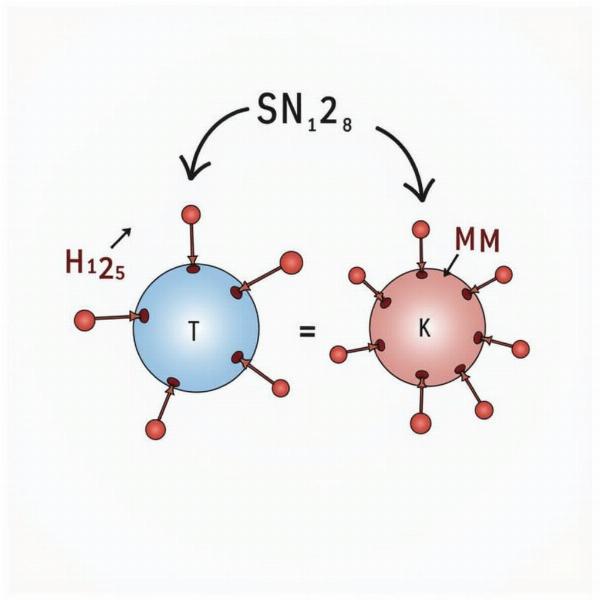Steric hindrance, a crucial concept in organic chemistry, plays a significant role in determining the reactivity and properties of molecules. Understanding its meaning in Hindi, along with its implications, is essential for anyone studying or working in the field of chemistry. This article aims to provide a detailed explanation of steric hindrance, its Hindi equivalent, and its various applications.
What is Steric Hindrance?
Steric hindrance refers to the repulsive forces between electron clouds of atoms or groups of atoms when they are forced close to each other. This repulsion arises due to the Pauli exclusion principle, which states that no two electrons in an atom can have the same set of quantum numbers. As atoms or groups approach each other, their electron clouds overlap, leading to increased repulsion and destabilization. The larger the atoms or groups involved, the greater the steric hindrance.
Steric Hindrance Meaning in Hindi: स्थानिक अवरोध (Sthaanik Avrodh)
The Hindi equivalent of steric hindrance is स्थानिक अवरोध (Sthaanik Avrodh). स्थानिक (Sthaanik) means “spatial” or “relating to space,” and अवरोध (Avrodh) means “hindrance” or “obstruction.” Therefore, स्थानिक अवरोध aptly describes the phenomenon of spatial obstruction caused by the proximity of atoms or groups.
Impact of Steric Hindrance on Reactivity
Steric hindrance significantly impacts the rate and outcome of chemical reactions. It can make it more difficult for reactants to approach each other, slowing down the reaction rate. For example, in SN2 reactions, bulky groups around the reaction center hinder the approach of the nucleophile, leading to a slower reaction.
 SN2 Reaction with Steric Hindrance
SN2 Reaction with Steric Hindrance
Conversely, steric hindrance can also stabilize molecules by preventing unfavorable conformations. For instance, the stability of tertiary carbocations is partly attributed to the steric hindrance provided by the three alkyl groups, which prevent the planar carbocation from being attacked from the back.
Steric Hindrance in Everyday Life
While often discussed in a chemical context, steric hindrance has implications beyond the laboratory. For example, the folding of proteins is influenced by steric interactions between amino acid side chains. These interactions determine the protein’s three-dimensional structure and, consequently, its function.
Types of Steric Hindrance
Different types of steric hindrance exist, including:
- F-strain (Front strain): This occurs when bulky groups on a reacting molecule hinder the approach of another reacting molecule.
- B-strain (Back strain): This occurs when bond angles are forced to deviate from their ideal values due to steric interactions.
- Torsional strain: This arises from the repulsion between electron clouds in bonds on adjacent atoms.
What are the consequences of steric hindrance?
Steric hindrance can affect various molecular properties, including:
- Reaction rates: As mentioned earlier, it can slow down reactions by hindering the approach of reactants.
- Conformations: It can influence the preferred conformations of molecules, favoring those with less steric strain.
- Stability: It can stabilize molecules by preventing unfavorable reactions or conformations.
Conclusion
Understanding steric hindrance, its Hindi meaning (स्थानिक अवरोध), and its impact on molecular properties is crucial for comprehending various chemical phenomena. This concept plays a vital role in organic chemistry, influencing reactivity, stability, and molecular conformations.
FAQ
- What is steric hindrance in simple terms? It’s the repulsion between atoms or groups when they get too close to each other.
- Why is steric hindrance important? It affects how molecules react and behave.
- What is the opposite of steric hindrance? There isn’t a direct opposite, but reduced steric bulk leads to less hindrance.
- How can steric hindrance be measured? It can be assessed through various experimental techniques and computational methods.
- What is the significance of steric hindrance in drug design? It plays a key role in determining how drugs interact with their targets.
- How does steric hindrance affect the boiling point? Branched molecules with higher steric hindrance have lower boiling points than straight-chain isomers.
- Can steric hindrance be overcome? Sometimes, increasing the reaction temperature or using a stronger reagent can overcome steric hindrance.
Meaning-Hindi.in is your trusted partner for professional Hindi translation services. We specialize in various domains, including business and commerce, legal, technical, website localization, educational, and specialized translations. Our expertise in technical translation ensures accurate and culturally sensitive rendering of complex terminology like “steric hindrance” and its Hindi equivalent. Need a reliable translation partner? Contact us at [email protected] or call +91 11-4502-7584. Meaning-Hindi.in is your gateway to bridging the language gap.